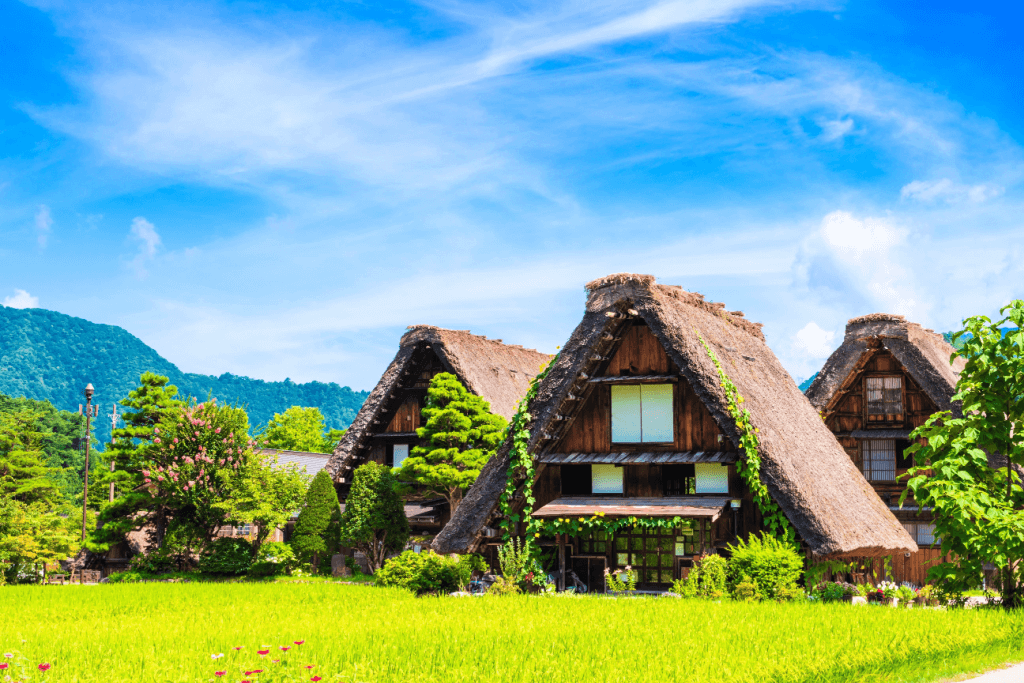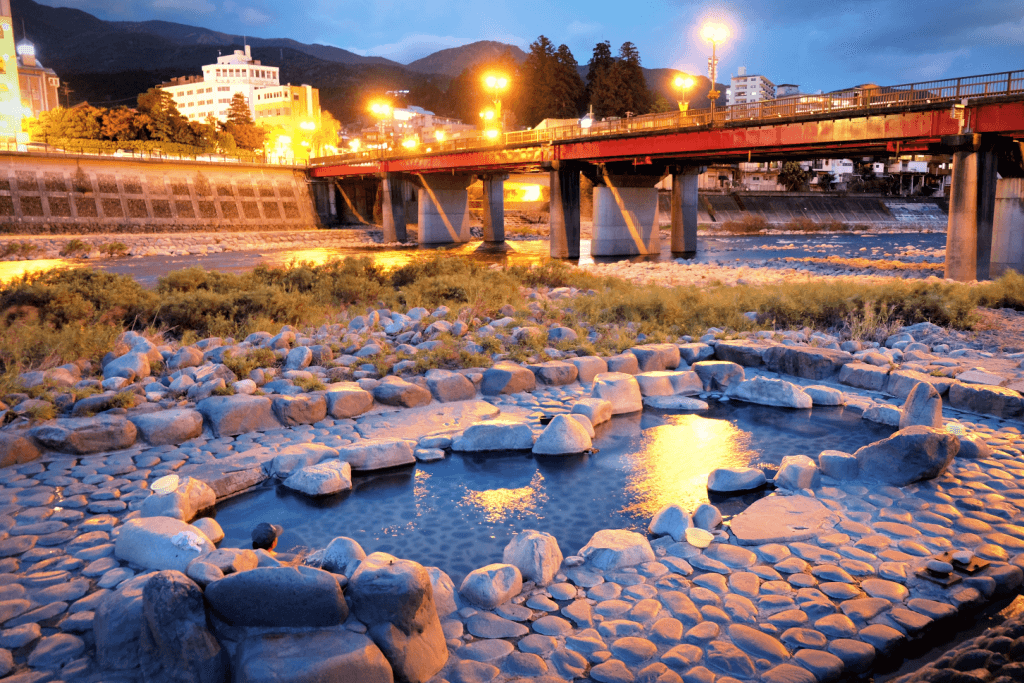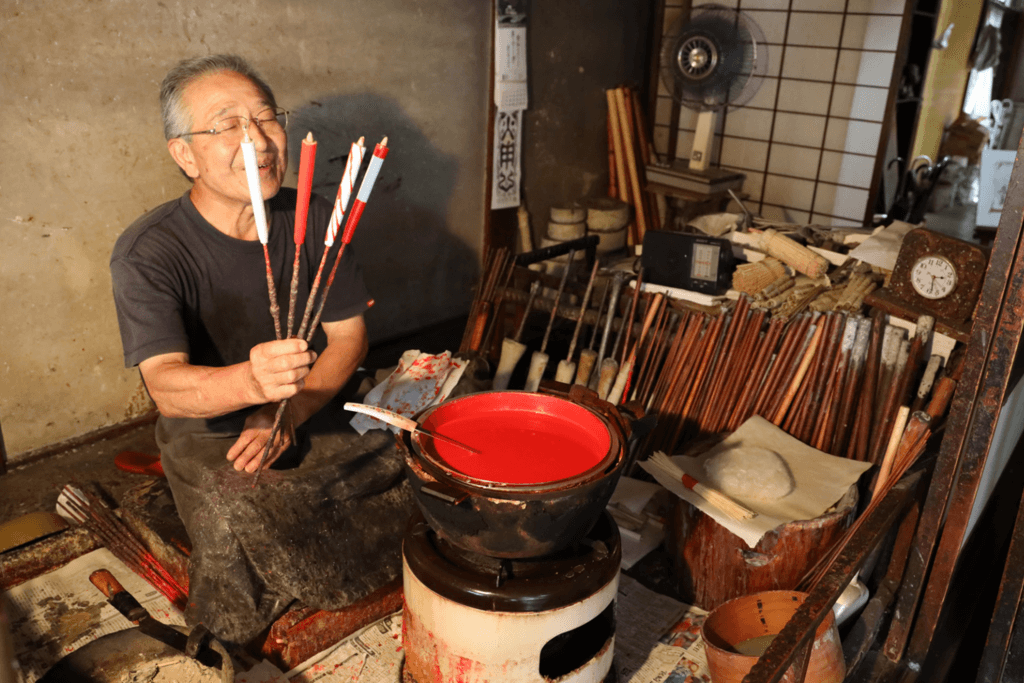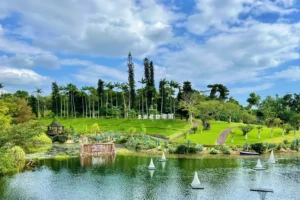Gifu Prefecture is a beautiful place to visit during your next visit to Japan! It’s famous for its delicious local delicacies such as Hida Beef and Ayu Sweetfish. It is also known for its beautiful scenery, historical landmarks, and healing onsens.
Table of Contents
ToggleShirakawa-go
Shirakawa-go is a village of farmhouses located in the mountains of Gifu. Historically, it was hard to reach with its mountainous paths, hindering accessibility for centuries. Now, it’s one of the most popular places in Gifu! When you visit the village for the first time, it can feel like you’re stepping into the past.

In 1995, UNESCO declared Shirakawa-go a World Heritage Site because it preserves traditional Gassho-Zukuri farmhouses. Locals still inhabit some of these farmhouses, which are over 250 years old. The term “Gassho-Zukuri” in Japanese means “constructed like hands in prayer,” referring to roofs that resemble hands pressed together for prayer when observed closely.
These uniquely designed roofs were created to withstand heavy snow in the region during winter. The houses also feature attic spaces, historically used for cultivating silkworms. Visiting Shirakawa-go provides an opportunity to explore the interiors of these houses and gain a firsthand glimpse into the lives of people from centuries past.
Hida Folk Village
The Hida Folk Village Takayama City in Gifu. The village is a public open-air museum that features 30 traditional houses from the Hida region. These houses were built during the Edo Period (1603-1868) and relocated to Takayama. The houses feature similar characteristics to the Gassho-Zukuri farmhouses in Shirakawa-go. It is a great place to visit if you’re short on time but want to see Gifu’s and the history of the Hida region.

All the houses in the Hida Folk Village are carefully preserved and feature unique architecture that you can explore. Additionally, the houses exhibit the tools and utensils used in residents’ daily lives during the Edo period.
At the Hida Takayama Crafts Experience Center, you can experience local crafts such as weaving and wood carving for a small fee. You can also see a beautiful panoramic view of the city and the Japanese Alps from the village. The village is about a 30-minute walk from Takayama Station, so it can be an excellent stopover visit!
Shobo-ji Temple
Shobo-ji Temple is located in Gifu City and is famous for housing the largest dry lacquer statue of Buddha in Japan. The Buddha is one of Japan’s three great Buddha portrait statues; the others are in Nara and Kamakura. The temple’s history dates from the early Edo Period in 1638, becoming an Obaku-sect temple in 1692. The temple is also famous for its Chinese-influenced architecture and ornamentation.

Artisans crafted the Buddha statue using a distinctive technique involving adhering Japanese paper to a wood, bamboo, and clay mold. Subsequently, they applied a second layer of Japanese lacquer and concluded the process with a final layer of gilding. The frame, resembling a basket, uses wood, earning the Buddha the moniker “Basket Buddha.” If you have an affinity for Buddhism and distinctive architecture, include this temple in your must-visit list!
Are you looking for wonderful snacks while traveling through places like Gifu? Check out Sakuraco! Sakuraco delivers traditional Japanese snacks, teas, sweets, and snacks from local Japanese makers directly to your door so you can enjoy the latest treats directly from Japan!
Gero Onsen
Gifu Prefecture is famous for its onsens, particularly onsen towns such as Gero Onsen. According to local legends, the onsen town was discovered by accident. The legend says villagers observed an egret repeatedly going to a river to heal its wounds. This led the villagers to discover the hot springs. Since then, Gero Onsen has become known for its regenerative powers, claiming to heal various misalignments in one’s body.

The onsen town has many onsen baths to visit, including outdoor ones by the river! If you’re visiting for a day or two, you can get an onsen pass, which allows you to visit up to three onsens for a discounted price. In addition to the onsen, you can visit Gero Onsen Gassho Village. Like the Hida Folk Village, the Gero Onsen Gassho Village is an open-air museum exhibiting Gassho-style structures relocated from Shirakawa-go.
Mishima Japanese Candle Shop
Mishima Japanese Candle Shop is located in Hida City and has been in business for over 240 years. Here, candles are handmade using traditional Japanese methods using wax derived from the wax tree’s fruit. Since these candles were originally for Buddhist temples, they are 100% plant-based, making them a perfect gift or souvenir for your vegan friends!

One of the unique characteristics of this shop’s candles is their unique wicks. This is because they’re resistant to wind and difficult to extinguish. Additionally, they are slow-burning and produce little smoke. When you visit the store, you can see the handmade candles and listen to the master explain the fine details of his craft.
Why should I visit these places in Gifu Prefecture?
Gifu is a wonderful prefecture full of history, unique architecture, beautiful nature, and onsens. No matter the season, there are plenty of things to visit and do that you cannot find anywhere else in Japan. Visiting places such as Shirakawa-go and Hida Folk Village gives you a natural feel for ancient Japanese architecture and daily life.
These places also have unique souvenirs, especially Mishima Japanese Candle Shop, which sells 100% plant-based candles. No matter what you’re looking for, Gifu has it! What places do you want to visit and why? Let us know in the comments below!











